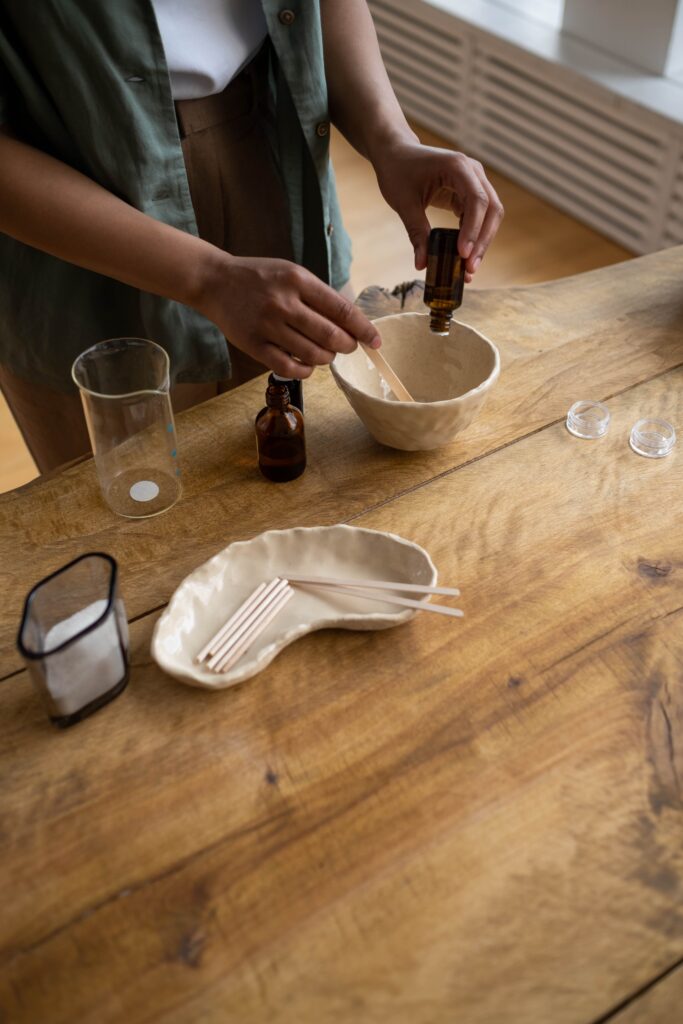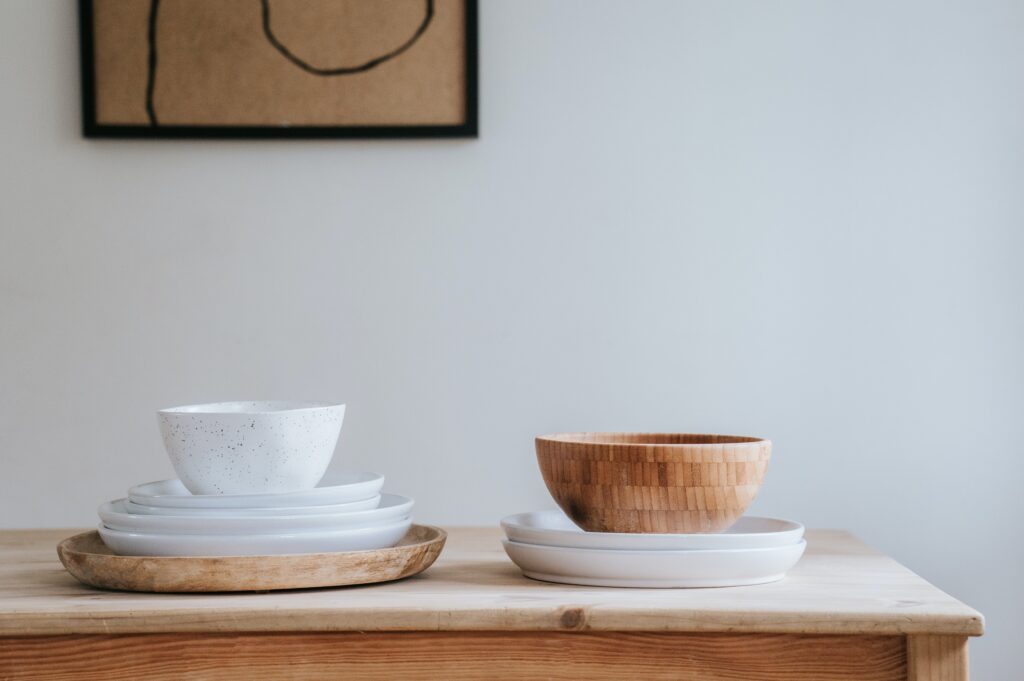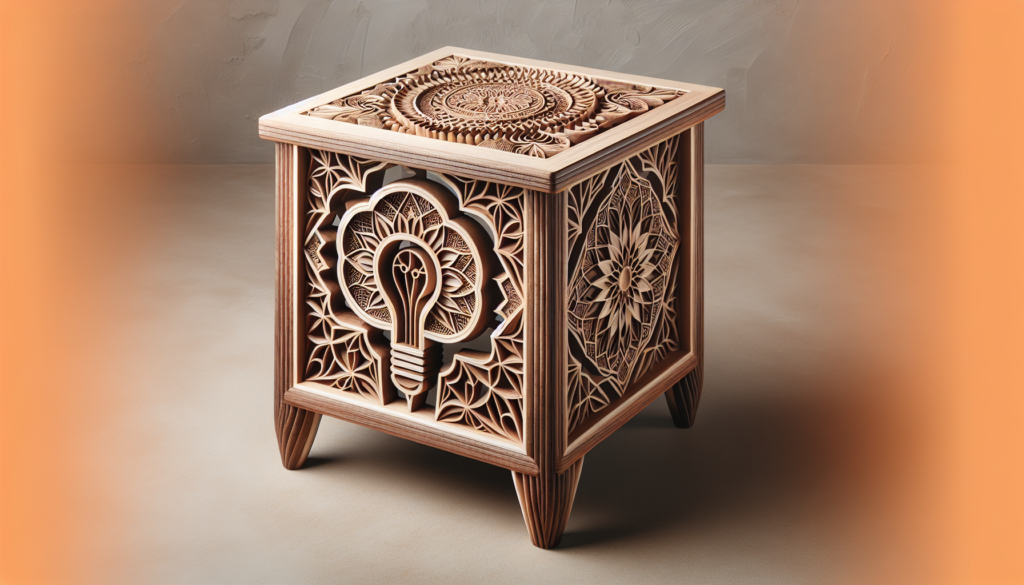Hey! Looking to add a touch of charm to your living room or bedroom? Well, we’ve got just the thing for you – a wooden side table project! Whether you’re a seasoned DIY enthusiast or just starting out, creating your own side table can be a fun and rewarding experience. From selecting the type of wood to putting on the finishing touches, this project allows you to showcase your creativity and craftsmanship. But that’s not all – if you’re also wondering about how to make a wooden dish drying rack, we’ve got you covered there too. Keep reading for some handy tips and tricks!
Can You Suggest A Project For A Wooden Side Table?
Introduction to Wooden Side Tables
Wooden side tables are versatile and functional pieces of furniture that can complement any room in your home. They provide an ideal spot for placing books, lamps, or decorative items, while also serving as a convenient surface for your morning coffee or evening snack. Building your own wooden side table is a rewarding and enjoyable DIY project that allows you to customize the design and style according to your preferences. Whether you’re a seasoned woodworker or a beginner looking for a fun project, constructing a wooden side table can be a great way to enhance your home decor while showcasing your craftsmanship.
Benefits of Building a Wooden Side Table
Customization and Personalization
One of the significant advantages of building a wooden side table is the ability to customize and personalize every aspect of its design. You have the freedom to choose the wood species, the size, shape, and even the decorative elements. By tailoring the side table to your specific needs and preferences, you can create a piece that seamlessly integrates with your existing furniture and reflects your unique style.
Cost-effectiveness
Building your own wooden side table can be a cost-effective alternative to purchasing one from a store. While furniture prices can vary significantly, the costs of materials and tools required for building a side table are generally cheaper. Additionally, you have the opportunity to repurpose or upcycle materials, which can further reduce the overall project cost.
Durable and Long-lasting
When you build a wooden side table, you have control over the quality of materials and construction methods used. By selecting high-quality wood and employing proper joinery techniques, you can ensure that your side table is sturdy, durable, and built to last. Unlike mass-produced furniture, which may be made with subpar materials, a handmade wooden side table can withstand the test of time and be passed down through generations.
Sustainability and Environmental Friendliness
Building your own wooden side table allows you to make sustainable choices by using responsibly sourced materials. Instead of relying on furniture made from composite materials or plastics, which can harm the environment, you can opt for wood that is renewable, biodegradable, and carbon-neutral. By embracing DIY woodworking projects, you contribute to a more sustainable lifestyle and reduce your carbon footprint.

Essential Tools and Materials
To embark on your wooden side table project, you will need a set of essential tools and materials. While the specific requirements may vary depending on the design and complexity of your chosen side table, here are some commonly used items:
Tools Needed for Building a Wooden Side Table
- Tape measure
- Saw (such as a miter saw or circular saw)
- Drill and drill bits
- Chisels
- Clamps
- Sandpaper or a sander
- Wood glue
- Screwdriver or drill-driver
- Square
- Router (optional, for decorative edges)
Types of Wood Ideal for Side Tables
When selecting wood for your side table, consider both its aesthetic appeal and structural properties. Some popular wood species suitable for side tables include:
- Oak: Known for its durability and distinct grain pattern, oak is a popular choice for furniture projects.
- Maple: With its light color and subtle grain, maple offers a clean and modern look.
- Walnut: Renowned for its rich, dark color and exquisite grain, walnut adds elegance and sophistication to any piece of furniture.
- Cherry: With its warm reddish-brown hue, cherry wood exhibits a beautiful natural luster and ages gracefully over time.
Additional Materials and Supplies Required
In addition to the primary tools and wood, you will also need various materials and supplies to complete your wooden side table project. These may include:
- Wood screws or nails
- Wood filler or putty
- Finishing materials (such as stain, paint, or varnish)
- Brushes or applicators for applying finishes
- Drawer slides or hinges (if incorporating drawers or doors)
- Drawer pulls or knobs (for added functionality and aesthetics)
Choosing the Design and Style
When creating your wooden side table, it’s essential to choose a design and style that aligns with your taste and complements your existing decor. Consider the following factors when making your selection:
Considering the Functionality
First and foremost, think about how you plan to use your side table. Will it primarily serve as a decorative piece, or do you need it to house extra storage? Understanding the intended functionality will help you determine the suitable size, shape, and features for your side table.
Exploring Different Styles
Side tables come in a variety of styles, ranging from traditional to modern and minimalist to ornate. Take the time to explore different design inspirations and consider how they will fit into your overall aesthetic vision. Look for inspiration in magazines, online platforms, or even by visiting furniture stores to determine the style that speaks to you.
Matching the Wood Species with the Decor
The type of wood you choose can greatly influence the overall look and feel of your side table. Consider the existing wood tones in your space and aim to match or complement them. Alternatively, you can also experiment with contrasting wood tones for a bold and eye-catching statement piece.
Incorporating Practical Features
Think about incorporating practical features into your side table design. Whether it’s adding a drawer for storage or a shelf for displaying books or magazines, these functional elements can enhance the usability and versatility of your side table.

Measuring and Planning
Before diving into the construction process, it’s crucial to measure and plan your wooden side table project carefully. This step ensures that the final product meets your requirements and avoids unnecessary mistakes. Here are some key considerations when measuring and planning:
Determining the Table Dimensions
Consider where your side table will be placed and measure the available space. Take into account any constraints, such as surrounding furniture or room layout. Decide on the height, width, and depth of the table, keeping in mind both aesthetics and functionality.
Creating a Structural and Diagrammatic Plan
To visualize your side table project, create a structural and diagrammatic plan. This plan should include detailed measurements, joinery techniques, and a breakdown of components. It will help guide you throughout the construction process and ensure that you remain organized and efficient.
Preparing and Cutting the Wood
After finalizing your measurements and plan, it’s time to prepare and cut the wood for your side table. Follow these steps for successful preparation and cutting:
Acquiring High-Quality Lumber
Selecting high-quality lumber is essential for a durable and visually appealing side table. Look for smooth, straight boards without any major knots, cracks, or warping. If possible, choose sustainably sourced wood to align with your eco-friendly values.
Calculating the Required Amount of Wood
Determine the quantity of wood required for each component of your side table based on your measurements. Factor in the thickness of the wood, as well as any additional pieces for joinery or decorative elements.
Preparing for Cutting
Prepare your workspace by clearing any debris and ensuring you have a stable and safe surface to work on. Use clamps or vices to secure the wood during cutting to prevent any accidental movement.
Using the Appropriate Cutting Techniques
Depending on your design and available tools, employ the appropriate cutting techniques. A miter saw or circular saw can be used for straight cuts, while a coping saw or jigsaw may be required for curved or intricate shapes. Take your time and ensure accuracy in your cuts, using a square or measuring tools as needed.

Joinery and Assembly
The joinery and assembly stage is where your side table begins to take shape. Proper joinery techniques will ensure stability and durability. Follow these steps for successful joinery and assembly:
Different Joinery Techniques
There are numerous joinery techniques you can utilize, depending on your skill level and the complexity of your design. Common techniques include butt joints, miter joints, dowel joints, and mortise and tenon joints. Research and select the most appropriate technique for your side table.
Selecting the Right Joinery Method for Your Side Table
Consider factors such as strength, aesthetics, and ease of construction when choosing the joinery method for your side table. Each technique has its advantages and disadvantages, so evaluate which one best suits your skills and desired outcome.
Ensuring Proper Alignment and Fit
Before permanently attaching the components, ensure proper alignment and fit. Dry-fit the pieces together, making any necessary adjustments or sanding to achieve a tight and seamless joint. Use clamps or braces to hold the pieces securely in place during assembly.
Sanding and Prepping for Finishing
To achieve a smooth and flawless surface, sanding and prepping your wooden side table is a vital step. Follow these guidelines for optimal sanding and prep:
Removing Imperfections and Roughness
Start by inspecting the wood surfaces for any imperfections, roughness, or sharp edges. Use sandpaper or a sander to carefully remove these flaws, taking care to maintain the integrity of the wood.
Selecting the Right Sanding Grits
Begin sanding with a coarse-grit sandpaper to remove any deep scratches or blemishes. Gradually progress to finer grits for a smoother finish. Aim for a consistent and uniform appearance across all surfaces.
Creating Smooth and Even Surfaces
Sand the wood surfaces in the direction of the grain, applying even pressure. Avoid uneven sanding or over-sanding in one area, as this can result in an uneven finish. Use sanding blocks or sanding aids for more precise and controlled sanding.
Filling any Cracks or Gaps
If your wooden side table has any cracks or gaps, consider using wood filler or putty to fill them. Follow the manufacturer’s instructions and allow the filler to dry completely before proceeding to the next step. Sand the filled areas to ensure a seamless blend with the rest of the wood.

Choosing the Finish
The finish you choose for your wooden side table will not only enhance its appearance but also provide protection against moisture, stains, and wear. Consider the following factors when selecting the finish:
- Stain: Wood stain enhances the natural grain and color of the wood while adding depth and richness to the overall look. Choose a stain that complements your desired aesthetic, whether it’s a light, medium, or dark tone.
- Paint: Opting for paint allows you to achieve a specific color or match your side table with your existing decor. Consider the type of paint suitable for wood and ensure proper priming and sealing for longevity.
- Varnish or Lacquer: Varnish or lacquer provides a protective coating and a glossy or satin sheen. It helps protect the wood from scratches and spills while accentuating its natural beauty.
- Oil or Wax: Alternatively, you can choose to finish your side table with oils or waxes to nourish the wood. These finishes provide a matte or satin appearance and enhance the wood’s natural texture and warmth.
Adding the Final Touches
The final touches of your wooden side table project can add personality and character to the piece. Consider the following options to complete your side table:
Adding Decorative Elements
Consider incorporating decorative elements such as carvings, inlays, or routed patterns to make your side table unique and visually appealing. These artistic touches can elevate the overall design and showcase your woodworking skills.
Functional Additions like Drawers or Shelves
Depending on your needs, consider adding functional elements like drawers or shelves to increase the versatility of your side table. These additions create additional storage space and make your side table more practical and useful.
Different Hardware Options
Choose the appropriate hardware, such as drawer pulls, knobs, or hinges, to complement the style and design of your side table. Hardware selection can significantly impact the overall aesthetic and functionality of the piece, so take your time to find the perfect match.
In conclusion, building your own wooden side table is a rewarding and fulfilling project that allows you to showcase your woodworking skills while creating a functional and aesthetically pleasing piece of furniture. By following the steps outlined in this article, you can successfully design, plan, and construct a wooden side table that perfectly fits your space and personal style. Enjoy the process, embrace your creativity, and get ready to admire your handmade masterpiece as it becomes a standout feature in your home.

